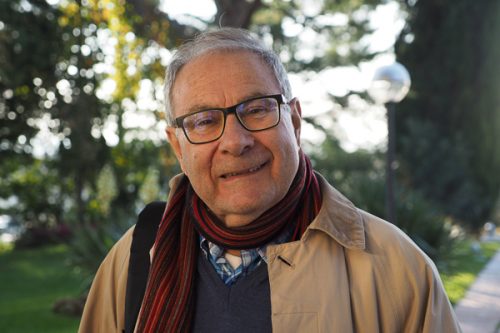
Sandro Boscaini is the sixth generation of his family to head up the family winery. I visited to taste the Masi range, witness the grape drying process they have specialized in, and to interview him and his chief winemaker Andrea del Cin. It was a really interesting trip.
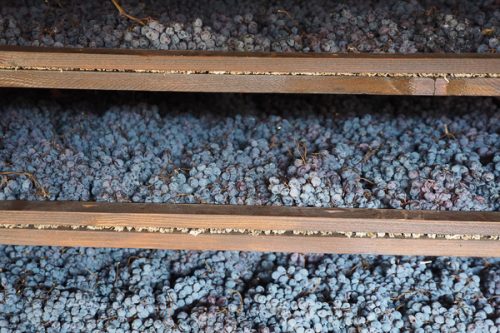
The core of Masi’s business is the process of appassimento, an old technique known to take place in the area since Roman times. It involves the laying out of freshly harvested grapes to dry, in order to concentrate flavours, sugar and acidity.
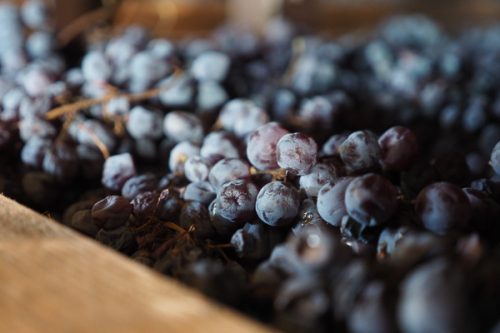
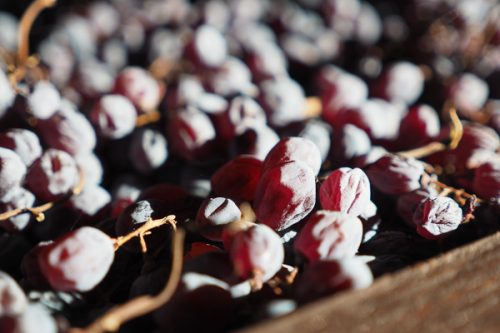
This process was originally used to produce two wines: Recioto, a sweet wine with some residual sugar, and Amarone, a more-or-less dry wine.
In 1964 Masi developed a new wine, called Campofiorin. This was made by refermenting wine on the freshly pressed skins of grapes that had been dried. They registered the name for this process, Ripasso, but later handed the name over to the chamber of commerce. ‘Campofiorin filled the gap between Valpolicella and Amarone,’ says Boscaini, ‘and it is the most widely sold IGT Italian wine.’
Masi are a significant producer, making 12 million bottles a year. 92% of the wine produced is made at least partly with the appassimento technique.
Sandro Bosciani has devoted his career to improving and refining the drying technique, and is popularly known as ‘Mr Amarone.’
‘When I took over from my father in 1978, I understood that Amarone could be great wine, provided that the producers started thinking of Amarone in a different way, and not make it in the way that our fathers and grandfathers taught us,’ says Sandro. His vision was to make a contemporary wine, and the first thing he needed to do was to get rid of the excessive oxidation that was common at the time. ‘Acting properly in my opinion is to clean everything, and to cut out any moment where the grapes could oxidise, during the long process of making the wine.’
‘The first thing is to pick the grapes a little underripe, one or two days before total ripeness. Later the grapes can reach over-maturation on the bamboo racks during the drying process.’
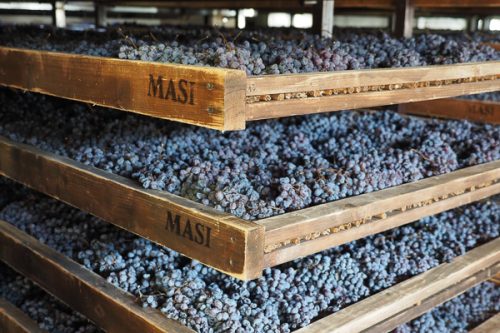
Sandro thinks that it is essential to control the drying process. ‘The hygienic way to make this process was not so clear in Valpolicella in general. Today, we clean everything in order to prevent any infections.’ However, some noble rot in the Corvina, up to 15%, can be very positive if it occurs late in the drying process.

But the main quality gain he made was in reducing the fermentation time of the dried grapes, which used to take five or six months. Fermentations struggled with the cold ambient temperature and the high sugar in the must, and oxidation was common. ‘We wanted yeasts with the power to do a shorter, healthy fermentation.’ So they isolated a strain of Saccharomyces bayanus that reduces this time to 35-45 days. ‘These aspects gave us a wine with incredible freshness.’
By 1983 they had achieved an Amarone that Sandro was happy with. ‘It was full of fruit – overripe fruit – but it had a lot of intensity, high alcohol, no residual sugar and no oxidation.’ The wine was launched at VinItaly in 1987, and this new style of Amarone surprised people. ‘I remember the shock at Vinitaly when we came out with the 1983,’ says Sandro. ‘A short time later everyone understood we were in the right way.’ The success of this wine moved Amarone into this new direction, and the late 1990s was the golden time for Amarone from the classic area.
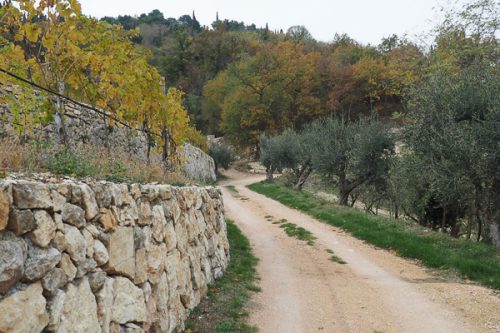

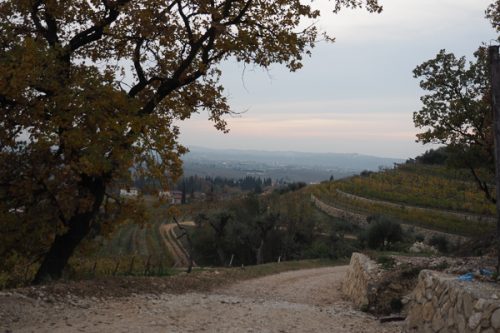
But a cloud was gathering. In 2002 there was a big storm from Lake Garda that destroyed almost all the grapes from the classic region. This left a gap in the market, and producers in other regions nearby began making Amarone, as they were legally entitled to. But some of these were a poor imitation of the real thing. ‘Some cooperatives and large growers said why not, we can dry grapes too. They used technology such as dehumidification and forced ventilation. They made what we call the second type of Amarone, lower in alcohol and price, going straight to the supermarkets.’
So today half of Amarone is the real thing, selling in Italy at €25-100, and the other half is made with a shorter drying process and sells for €10-15.
Recently, Masi went public. ‘I was very scared by the situation in Italy today,’ says Sandro. ‘Many family owned and family run wineries are in trouble. There are too many in this situation. We need a different approach with finance. The cost of land is incredible, and the cost of stockholding and marketing is very high. Modern promotion is needed. There is no alternative but to finance companies properly.’ He points out that there are around 20 000 wine producers in the country, but just 30 are generating more than €50 m. ‘All the rest are very small. I believe this should change. With my brothers we decided we can give a message. We didn’t need the money, but what if a son, daughter or nephew wanted to do something else? There needs to be a simple way to leave without putting the company in trouble.’ So Masi are now a public company, but the family still retain 75% of the shares.
Masi also have some notable collaborations, where they work with partner vineyards and take care of the winemaking and commercialization of the wines. The oldest is with the Serighio Aligheiri family, direct descendants of Dante. Their estate is now the home to a wine tourism operation: it was the first wine hospitality centre in the region. The second is with Count Bossi Fedrigotti, a family-owned winery in the Trentino who made the oldest Bordeaux-style wine in Italy. They own 40 hectares of vines. And the most recent is a venture into Prosecco with Canevel, a quality focused winery which is now 60% owned by Masi and 40% by the founders, the Camarel family.
One of Sandro’s missions has been to spread appassimento around the world. ‘I tried to find a place where we could transfer our grape varieties from Verona and implement our winemaking method in the drying of the grapes,’ he says. ‘Everyone copies Bordeaux, but we have a school of winemaking different from the others, but we need particular climatic conditions.’
Sandro began working with James Halliday in Australia, trying to put his system in place. In New Zealand he tried with a Swiss partner who managed to get some Corvina from UC Davis (the advantage here is that quarantine was 6 months versus three years from Italy), who also planted some Merlot. ‘The wine was quite good in some vintages,’ he recalls. ‘Then we met with some certain success in Balaton in Hungary, but in the end we gave up.’ In China they tried with Dragon Seal who had a French winemaker, who was committed and curious, but eventually had to give up. ‘How do you manage the brand? It was impossible.’ Eventually, they settled on South America, in Chile and Argentina. ‘In Chile they are much more square and less prepared for something new,’ says Sandro. ‘In Argentina they are 60% Italian and 30% are from Veneto.’
So they began Masi Tupungato in the Uco Valley of Mendoza, where they work with Corvina and Malbec, as well as Pinot Gris and Torrontes. ‘It’s not an easy country to work in for many reasons, but we believe we are making something good.’

Masi have invested in research on the appassimento technique, and have a research group headed up by their chief winemaker, Andrea del Cin, who has been working with Masi since 2002. Andrea explained more about the technical details of appassimento.
‘Something special happens inside the berries,’ he says. ‘Genes that are normally switched off suddenly switch on after 60 or 70 days of drying.’
They make a careful selection of the grapes and place them on bamboo racks, not plastic. The bamboo works better: if a grape leaks, the juice is soaked up. It’s possible to increase the speed of drying, but then the grapes taste different. ‘We prefer 90-130 day appassimento.’
Andrea also likes a bit of botrytis attack of around 5-10%, but not when they receive the grapes: they want it to develop on the grapes during the drying process. ‘Botrytis produces two enzymes that can oxidize the wine,’ he says. ‘Tyrosinase and laccase are oxidative, attacking the colour and oxidising the aromas.’ They want the botrytis to occur on the Corvina grapes only, and at a rate of 5-10%.
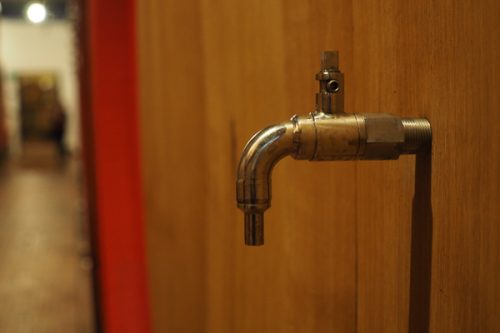
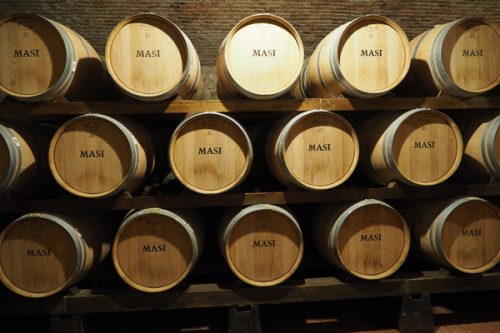
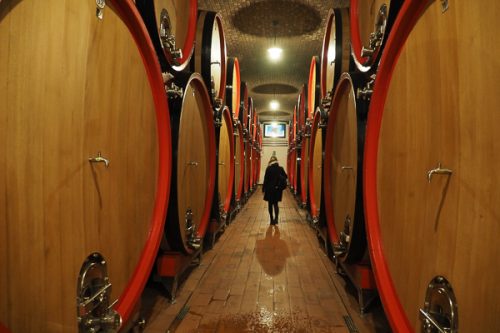
The result of this drying process is 30-40% loss of weight; the concentration of colour, sugar, tannins and acids; some glycerol from the botrytised grapes; and evolution from primary to complex aromas.
‘In the 1980s the technical group started to add semi dried grapes to already made wine instead of pommace,’ he says. Originally Campoforin, made since 1964, would have involved adding the pommace of Amarone to start a second fermentation, but the new ripasso technique involved adding semi-dried grapes to cause a second fermentation, resulting in more elegance. In 1986, they began using 70% fresh grapes and 30% semi dried for Campofiorin.
Masi have their own strains of yeast – called Masy-03, Masy-04 and Masy-0 – that have been selected from dried grape fermentations. These ferment at very low temperature, beginning at 5-8 C and then fermentation lasts for 35-40 days. ‘Fermenting really cold improves the glycerine, which adds to the glycerine produced by the botrytis attack,’ says Andrea.
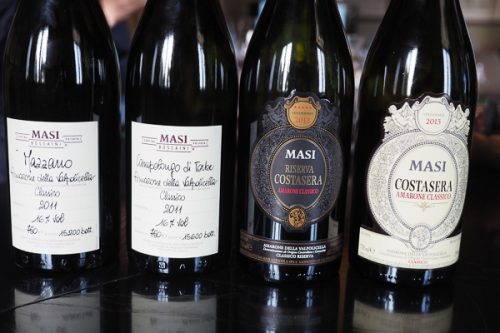
THE WINES
Masi Pinot Grigio 2017 (from fresh grapes, fermented in stainless steel)
Juice oxidation helps make this more stable and removes the colour. Very fruity and bright with citrus and pear fruit. Nice cleanness. Has a juicy, bright character with subtle herby notes.
Masi Verduzzo 2017 (from semi-dried grapes, 25 days)
Nutty and spicy with some apricot and peach richness, showing good acidity. Has some tangerine brightness and some creamy richness. Finishes nutty.
Masi Masianco Pinot Grigio delle Venezie 2017
85% Pinot Grigio with 15% Verduzzo (semi-dried and aged in 600 litre new oak). Nice tight, mineral style with citrus and pear, but also some nuts and spice and a subtle toasty, creamy richness. It all hangs together well, with a nice spectrum of fresher and richer flavours. Has some spiciness. Potential for development. 91/100
Masi Corvina 2017 (sample, fresh grapes)
Fresh, juicy and bright with strawberry, cherry and raspberry fruit and some peppery hints. Soft and fresh.
Masi Bonacosta Valpolicella Classico 2017
70% Corvina, 25% Rondinella, 5% Molinara, fresh grapes, 20% new small oak aged. Light, rounded, supple and tasty with nice red cherry fruit and a hint of pepper. Supple and juicy with nice texture. Easy and quite tasty. Subtle green notes add interest. 89/100
Masi Corvina 2017, semi-dried for around 100 days
Concentrated, sweet and dense with bright, grippy cherry and plum fruit. Slightly liqueur-like in flavour with some spicy bite and grippy tannins, as well as good acidity. Some sour cherry, too. This is the most susceptible grape to glycerol-building botrytis.
Masi Campofiorin 2015 Rosso del Veronese
70% Corvina, 25% Rondinella, 5% Molinara. 75% fresh wine refermented with 25% dried grapes. Mixture of large format and 600 litre barrels for ageing. Juicy, fresh and berryish with bright cherry and raspberry fruit, with a bit of grip. Good concentration with nice sweet berry fruits and good structure and acidity. This has potential to develop. Nice lick of sour cherry gives brightness. Sweet and sour in a nice way. 90/100
Masi Toar 2015 Valpolicella Classico Superiore
100% fresh grapes, with 80% Corvina, 10% Rondinella, 10% Oseleta. 14 months in French and Slavonian oak, half of each which is new. Pure and nicely structured with sweet cherries and plums, and some darker blackberry notes, as well as some tar and herb notes. Has a stern, dark backbone with some graphite qualities. Could develop nicely. 91/100
Masi Brolo Campofiorin Oro 2014 Rosso del Veronese IGT
80% Corvina, 10% Rondinella, 10% Oseleta, double fermentation technique. 24 months in a 600 litre cask. From a single vineyard. Complex, dense and quite tannic with lovely black cherry and blackberry fruit with lovely spicy underpinning and good acidity. There’s a lovely textural component from the dried grapes and also some sour cherries and pleasant bitterness. Nice pure fruit expression. Give this structured wine some time. 93/100
Masi Costasera Amarone Classico 2013
14.85% alcohol. 6.5 g/l residual sugar, TA 5.9 g/l. Sun-facing (west) slopes. 70% Corvina, 25% Rondinella, 5% Molinara. At least 90 days drying for all the grapes in this wine. Aged in large format oak (80%) and small oak (20%). This is smooth, alluring, aromatic and sweetly fruited. Floral black cherries with some blackcurrant, spice and tar, as well as some notes of chocolate and leather. The tannins are firm but smooth with lovely intensity and concentration, and very nice texture, showing sweet black fruits with notes of fine herbs and black tea, as well as sour cherry notes, some damson and a long smooth finish. 95/100
Masi Riserva Costasera Amarone Classico 2012
15.5% alcohol. Loose red soil on Eocene limestone and tight packed red soil on basalt. 70% Corvina, 15% Rondinella, 10% Oseleta, 5% Molinara. Aged in 600 litre casks (French and Slavonian, one third new). Complex nose of tar, spice, black cherries and gravel, with some herb and leather notes. The palate is tight and complex with sour cherries, black fruits, graphite, herbs and spice. Some notes of cocoa and a bit of cinnamon spice, with good acidity. This is a little tight and backward right now, but has amazing potential for development. Tea and herb complexity. Profound stuff. 95/100
Masi Campolongo di Torbe Amarone Classico 2011
16% alcohol. Single vineyard, clay soils over limestone, pergola-trained vines, average age 45 years. 70% Corvina, 25% Rondinella, 5% Molinara. 60% large oak, 40% 600 litre barrels. Powerful yet really fresh and expressive. Aromatic nose of sweet cherries, plums and spice with some floral cherry notes. Concentrated, spicy and fresh with some berry and cherry fruits, some spicy warmth, liqueur-like richness. Notes of leather and tea here. Has nice richness but also freshness, and although there’s a lot of structure, there’s elegance too. 96/100
Masi Mazzano Amarone Classico 2011
16% alcohol. Single vineyard, loose soil on Eocene marl. 75% Corvina, 20% Rondinella, 5% Molinara. Rich, aromatic, sweet, tarry, spicy berry fruits nose. Has a slight baked quality to it: roasted and rich. Has richness and depth on the palate, but also real grip and tannic structure. Tannic, earthy, dense and really intense with opulence, but also drying tannins and more of this baked fruit character. Unyielding at the moment, this has great density and power. 94/100
Find these wines with wine-searcher.com
See also: Visiting Serego Alighieri, Valpolicella
1 Comment on Meeting Mr Amarone: how Masi’s Sandro Boscaini reinvented appassimento
Great post – just the right balance of insight across science, art and business